James Dean Bradfield's guitar collection
20 years' worth of Manic Street Preachers electrics and acoustics
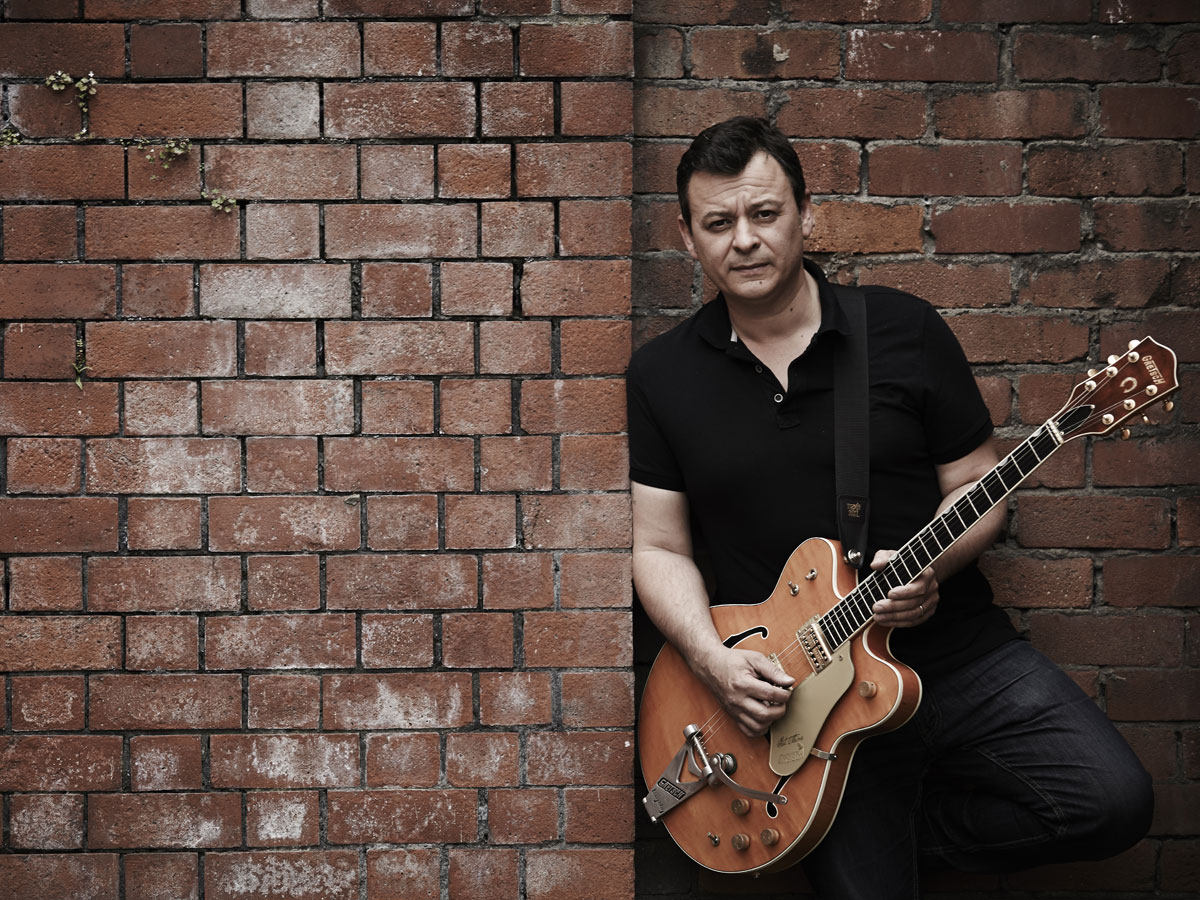
Introduction
Walk into Manic Street Preachers’ ‘Faster’ studio in Cardiff and you can almost smell the unique history of a unique group.
For a band who infamously promised they’d release one album then disband, something obviously didn’t go to plan. 28 years after forming, the Manics are still here and still shining. They’ve had many triumphs and more than their share of tragedy, but the resilient ‘boys from Blackwood’ continue to surprise.
Latest Manics album Futurology, their 12th, mixes motorik beats, heavy riffs, soaring guitar solos and lyrical curveballs. But Guitarist is mainly here to discuss the guitars of James Dean Bradfield.
‘Faster’ is an appropriate word for how Bradfield talks - he has an opinion on everything, but that’s how we like it. And James is a gear-head, too. Like you, JDB reads Guitarist magazine. The guitar gear in Faster studio is mightily impressive, from well-known favourites to rarities you’d never imagine.
“I started out on a Kay copy of a Gibson. Bought for £25 off a school-friend with paper-round money. It had an action like a suspension bridge!"
Bradfield was a relatively late starter on guitar, aged 15. But given that the Manics formed when he was 17, he can be forgiven. “I started out on a Kay copy of a Gibson. Bought for £25 off a school-friend with paper-round money. It had an action like a suspension bridge! But learning on that was a good lesson in itself - if you could play on that you could play anything. Jumping from that to my Fender Thinline Tele seemed easy - I’d done all the tough work on a really bad guitar.
“I’d actually say: don’t get too good a guitar in your formative years. Playing a bad guitar really builds up your muscles. Then, when you get a good guitar, you just fly.” That said, Bradfield has never taken a guitar lesson and says he’s never even owned a chord book - he taught himself by “playing records, listening, copying, repeat...”
It took a while for the band - then including lyricist and rhythm guitarist Richey Edwards, who disappeared on 1 February, 1995 and has been presumed dead since 2008 - to find its feet. “I was, in my head, Joe Strummer, yet I didn’t write the lyrics and didn’t play a Telecaster. At first, Richey was supposed to be the guitar hero - but he couldn’t really play guitar.”
James cites Strummer and Mick Jones as influences, alongside Sex Pistols’ Steve Jones, Skids’ Stuart Adamson, Magazine/ Banshees/PiL’s John McGeoch, Simple Minds’ Charlie Burchill and many others. And today, at least, the “Welsh Slash” doesn’t mention Slash at all.
James has many other guitars, some here at Faster, some not. Observant fans will know of his 1982 black Gibson Les Paul with Angus Young pickups, a Fender John 5 Telecaster, a white Gibson Flying V, his Fret-King Ventura 60 (“I really like those guitars, great necks”), his Gretsch White Falcon, a Burns Brian May, various Fender Stratocasters... and more. And that doesn't include his amp haul, including many Fenders, Marshalls and Voxes, his Ampeg Reverbrocket Trans Am combo, plus a Deacy (the Brian May amp), a Watkins Westminster, and a favourite old Burman. JDB has a lot of gear.
“I take 15 or so guitars out for a full tour,” he says. “For festivals, it’s more likely seven. But a lot of that is because of tunings. I use open G on Kevin Carter and This Is Yesterday... Tsunami is in open G, but with the top string tuned to C.
“Show Me The Wonder is on the Tele, but tuned down to D. My Little Empire is also tuned down... so it’s not just taking guitars out for the sake of it, it’s to make it quicker to play the songs. I’ve seen other guitarists put capos on and play in tune straightaway. Howthef**kdoyoudothat?Ineedtohave dedicated guitars in different tunings.”
You can imagine a full glossy book about James Dean Bradfield’s guitars, amps and effects, but as we said: Guitarist is here to hear stories about some of his favourites. So, let’s go faster...
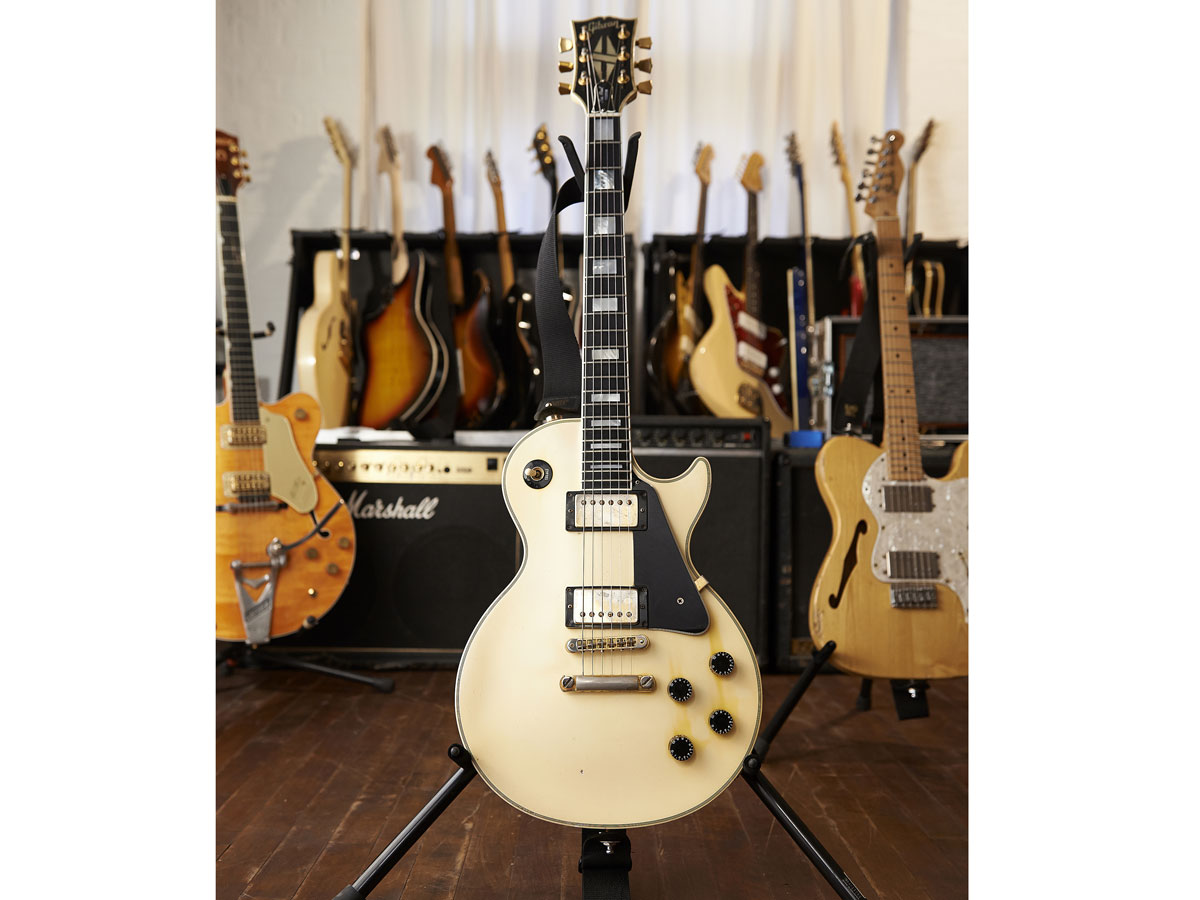
1990 Gibson Les Paul Custom aka 'Faithful'
JDB: “Bought new from Macari’s on Denmark Street (London) just after we signed with Columbia. Before that, Richey had a two-horned Gordon-Smith and I had the Fender Tele Thinline. But we swapped, as the Gordon-Smith seemed more like a Gibson-esque lead guitar and the Tele a bashing-and-crashing rhythm guitar.
“It was almost a given, to me, that as lead guitarist I would play a Gibson"
“It was almost a given, to me, that as lead guitarist I would play a Gibson. I actually wanted my portrait shot on the Generation Terrorists sleeve to be just this Gibson. Nick (Wire, bass) vetoed me: ‘that’s too Spinal Tap!’. Instead, it’s me at a piano, with a blouse on!
“Getting this Les Paul was Shangri-La to me - ‘when I get a white Les Paul Custom I will fly!’ The neck’s been broken twice, once live, and during recording The Holy Bible. It’s had four pickup changes, and new this year are great humbuckers by Cardiff’s own Shed Pickups.
“We met the Sex Pistols in 1996 or 97 when they reformed, and I got the back signed by Steve Jones and laminated, like the true Pistols nerd I am. Well, in fact, my tech got it signed for me, as I was too scared to ask.
“A white Les Paul Custom is not many people’s lead guitar, but I just thought: ‘Steve Jones! Lyndsey Buckingham! Mick Jones!’ When I bought it, I remember thinking: ‘I can’t wait for this guitar to be old.’ And now it is. It’s weathered, been on all 12 albums. Is it iconic? Maybe, on a mini level.”
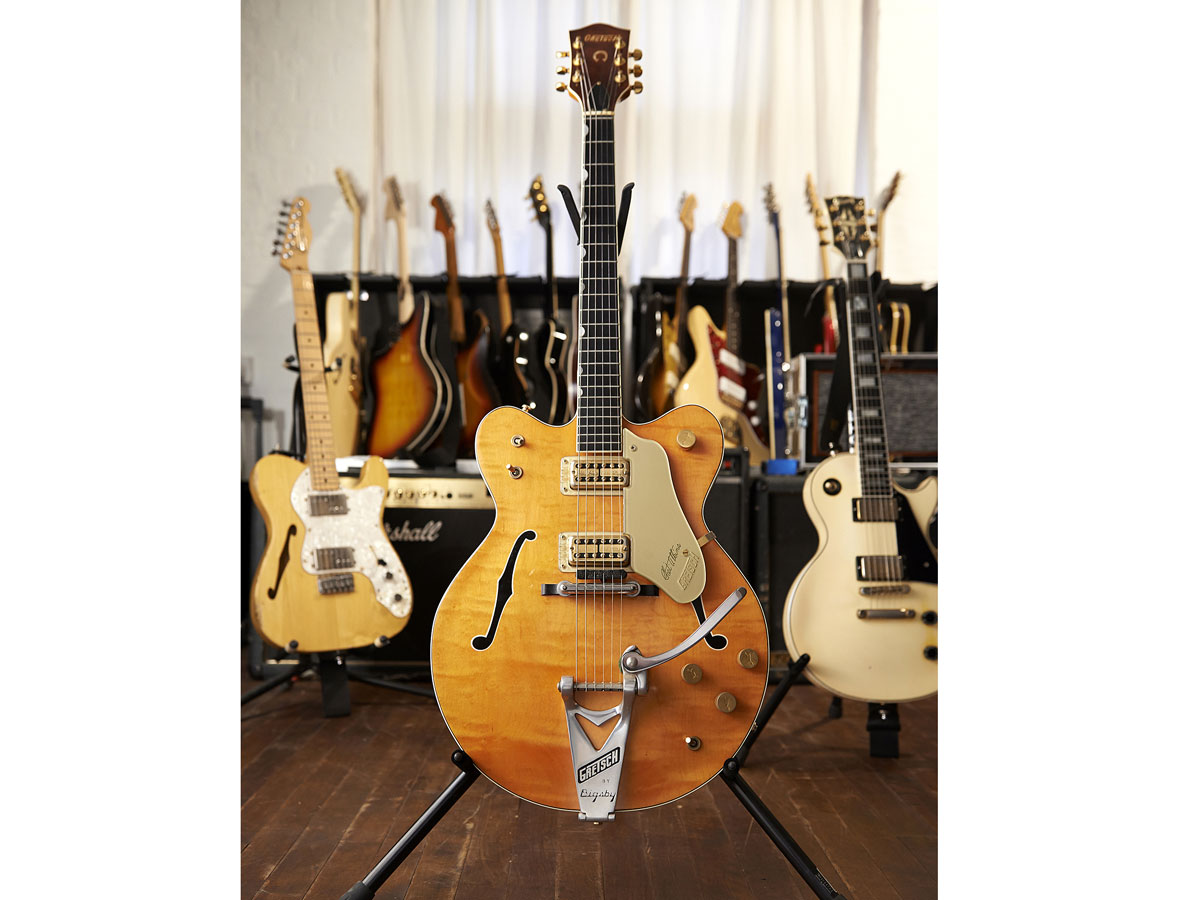
1965 Gretsch G6120 Chet Atkins
“Bought from Fat Rick’s Guitar Emporium just before Everything Must Go. I’d seen Joe Perry talking in the documentary on the making of Aerosmith’s Pump, saying: ‘sometimes, I'll get a guitar just ’cos it looks cool.’ So this is me channelling Joe Perry.
"It really helped Everything Must Go - the title track, Enola Alone and quite a few other songs"
"It just looked lovely, and I had no concerns about the action, pickups or anything. But it really helped Everything Must Go - the title track, Enola Alone, quite a few other songs. It’s got a really range-y sound. Mike Hedges (producer) wanted to cut my Marshalls out of Everything Must Go. He wanted ‘produced trashiness’, not a big slab sound.
“So I used a Vox AC30 a bit more on that album and this Gretsch, and it really helped what I was trying to achieve, guitar-wise. It’s also all over This Is My Truth... and Journal For Plague Lovers. It’s the guitar on Your Love Alone Is Not Enough. But on that track it’s this Gretsch through a Marshall JCM900 linked up with a Diezel VH4. I was surprised how a hollowbody like this could sound so powerful, yet still have such a lovely colour-range across the strings.
“A lot of people seem to play Gretsches through quite boutique-y amps, but they sound great through Marshalls or a Diezel, believe me. It’s a star-spangled sound.”
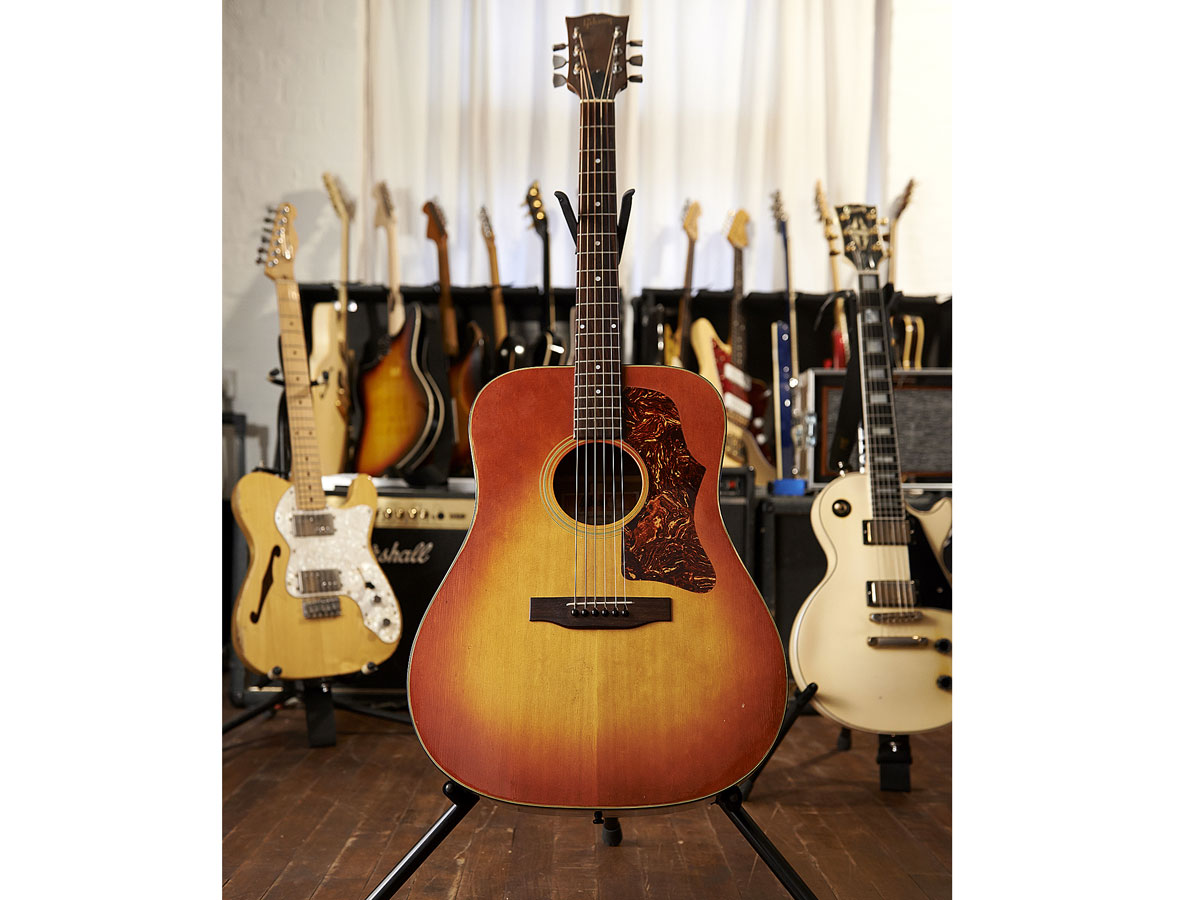
1973 Gibson J-45
“Bought during the worst hangover of my life, from Fat Rick’s Vintage Guitar Emporium in London. Sweat was dripping off my nose and I don’t imagine even Richard Burton ever felt so terrible. But I wanted an acoustic with a bit of midrange.
"It’s my ‘songwriting guitar’. If You Tolerate This..., Masses Against The Classes, The Everlasting, Show Me The Wonder, some of Your Love Alone... were all written on this"
"I met up at Rick’s with my tech then, ‘Deptford John’, I bought it, went home, and passed out. Woke up the next day and was like... ‘What the f**k have I bought?’ But I don't regret it.
“I guess it’s my ‘songwriting guitar’. If You Tolerate This..., Masses Against The Classes, The Everlasting, Show Me The Wonder, some of Your Love Alone... were all written on this.
"If I’ve been struggling for a while, I go back to this. I hate falling into the traps of saying ‘there’s magic in the wood’, or ‘there must be a Ley line running through this guitar’, but it’s got something. I always keep it close to me. It’s my most versatile acoustic. A lucky guitar.”
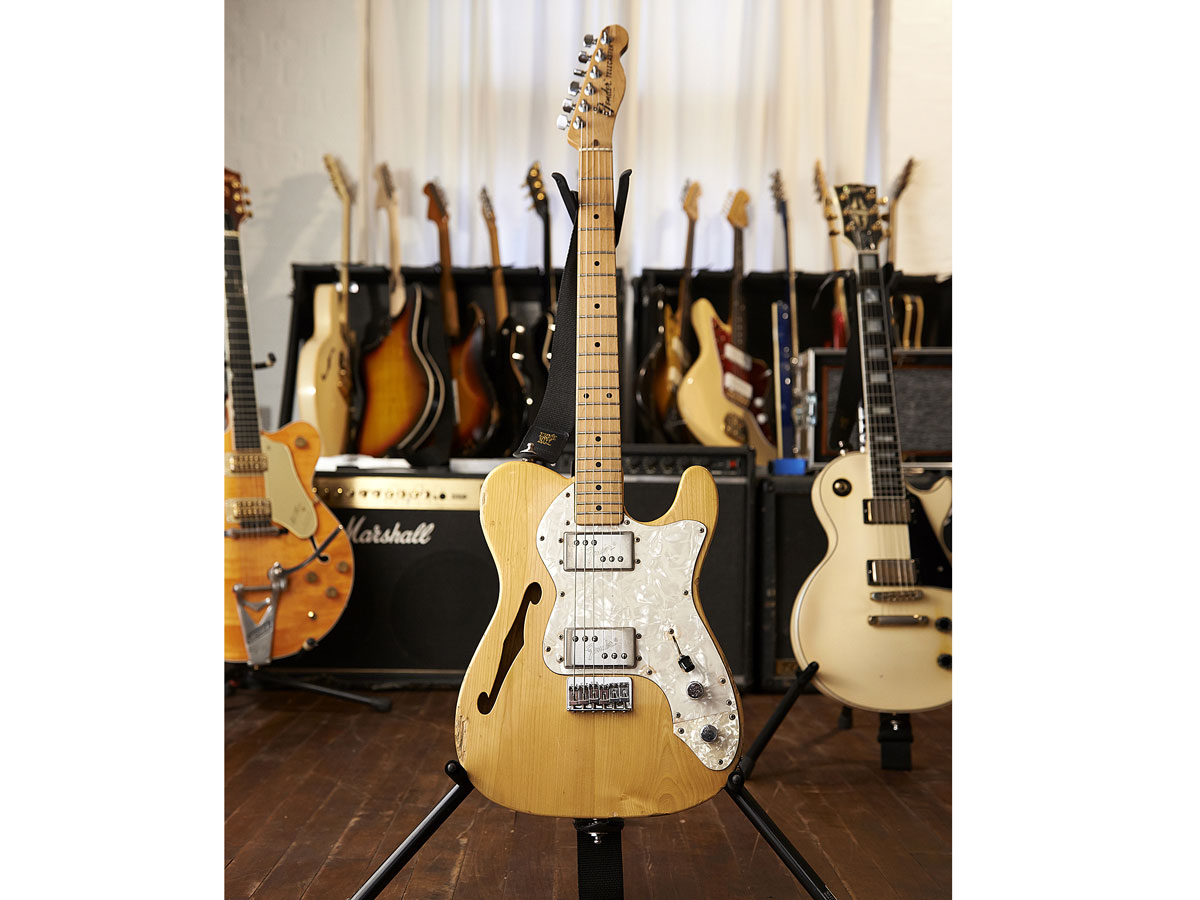
1986 Fender Telecaster Thinline (aka "Richey")
“Good story. I got into a big fight in Newport, aged 18, at Christmas time. Odds were bad, three against one [laughs]... and I got my jaw broken. So I had my jaw wired up in hospital and my mum had to feed me some sort of liquidised Christmas dinner that year. And then my girlfriend left me...
"Here’s the dirty secret. The main riff on Motorcycle Emptiness is not my Les Paul, it’s this Tele."
“But the rest of the band clubbed together whatever money they had and bought me this from Cranes Music in Cardiff. An amazing sense of band brotherhood!
“I've always loved this guitar. It has such amazing resonance, you can practise without an amp. But as I said before, me and Richey swapped this and the Gordon-Smith, so he got this one. We only had these two decent guitars at the time, everything else was taped-together rubbish. It’s been on pretty much every album.
“And here’s the dirty secret. The main riff on Motorcycle Emptiness is not my Les Paul, it’s this Tele. Me and (Generation Terrorists producer) Steve Brown were A/B-ing both and he insisted the Tele’s sound won out. He was EQ-ing a lot, scooping all the top out and compressing, and putting ‘top’ back in on mixing. I was part-thinking, ‘No! It should be a Les Paul’ - but the Tele just worked.”
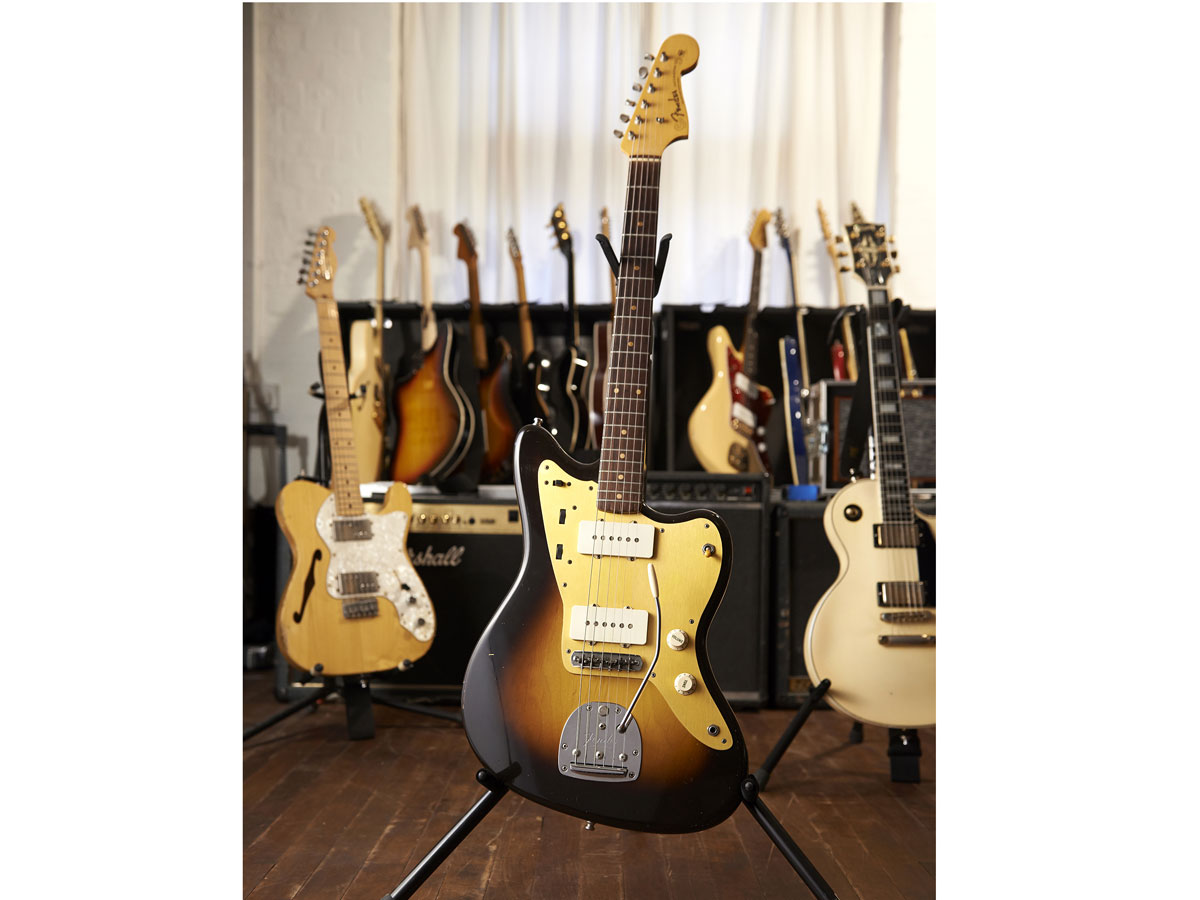
1960 Fender Jazzmaster
“There’s a lot of this on Lifeblood. Those songs weren’t asking for my Chuck Berry-isms or my soft-metal-isms. Jazzmasters are great studio guitars, but I just can’t get on with them live.
"Jazzmasters are great, but live they are abrasivelytoppy"
"I still use a pretty rudimentary rig; a Marshall JCM900 - the ‘soft-metal’ amp - and a Mesa/Boogie Lone Star, and I don’t digitise my sound much. So, live, I need a good guitar sound. Jazzmasters are great, but live they are abrasively toppy. I always record them through a clean channel and put the gain on after.”

1982 Rickenbacker 360 12-string
“I won this in a bet with [record producer] Mike Hedges. During one session in his Normandy studio for This Is My Truth... we were ragging each other over a rugby score. So we had a bet!
“I won this in a bet with [record producer] Mike Hedges"
"My stake was one of my Vox AC30 amps, which he loved. His was this Rickenbacker. When I won the bet, I said, ‘oh, just forget it’. But Mike is this huge Celtic six-foot-five guy. The man has pride! He insisted on me having it.
“I used it on, among other songs, If You Tolerate This... for the solo. My Les Paul Custom and the Thinline weren’t quite working. Quite an interesting solo - it went through both my Marshall and Vox and then got returned through a Moog synth. It’s a simple solo, but I like to think it’s elegant.
"It’s funny, that solo didn’t work on any of my other guitars. Serendipity, maybe? The giant and the gimp had a bet, and the gimp won! I can’t make it work live, though - too many frequencies.”
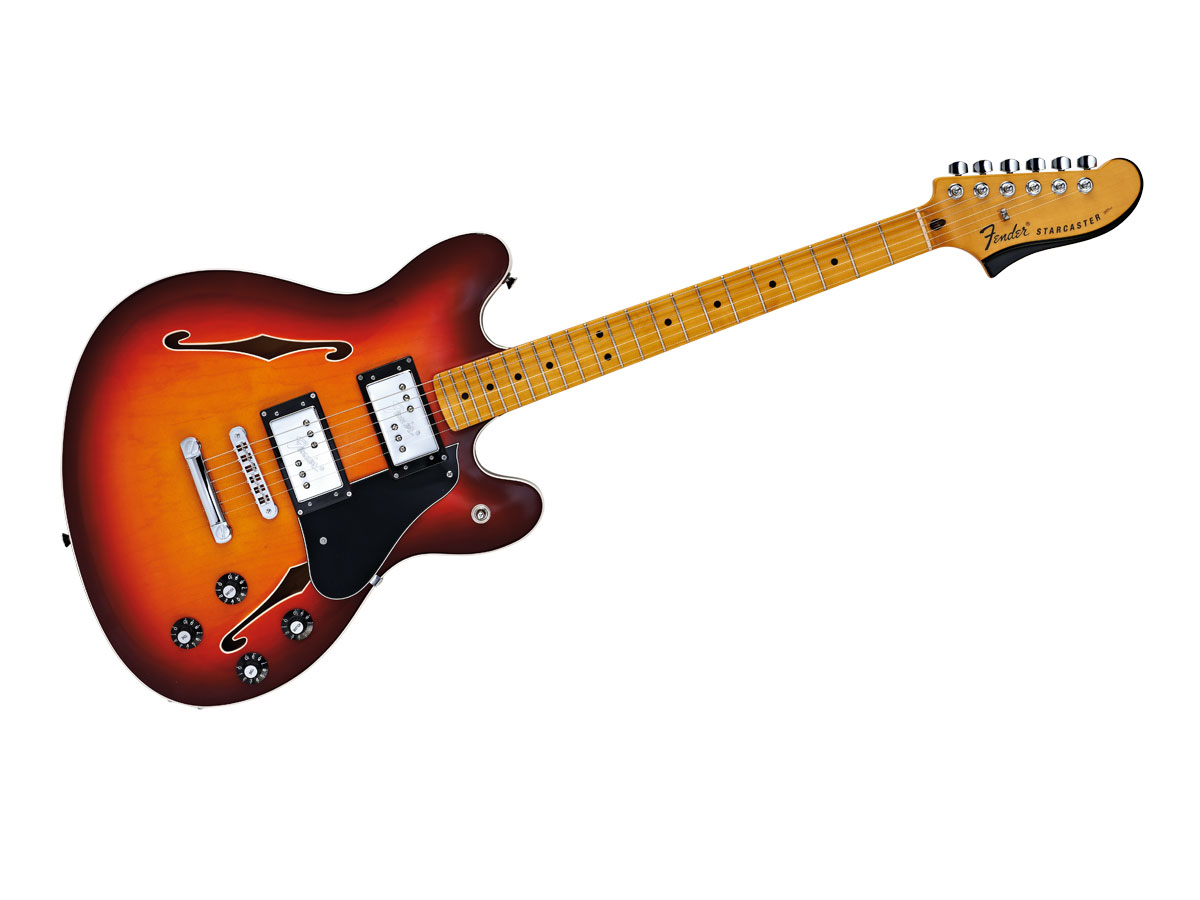
Fender Starcasters (one 70s original, one 2013 Modern Player)
“I first played one in 1996 - what an amazing guitar. Sean (Moore, Manics drummer) found my first second-hand and it’s all over Futurology. I also have a recent reissue, too.
"Starcasters have one of the best fretboards, Fender or otherwise, I’ve ever played"
"Starcasters have one of the best fretboards, Fender or otherwise, I’ve ever played, and a great sound. On Futurology, I was really trying to find riffs on this, not so much chords. Effect pedals chime out on this, too.
"They’re an anomaly of a guitar, aren’t they? They probably should have sold better than they did. I’ve only ever seen (Radiohead’s) Jonny Greenwood, (Morrissey’s) Boz Boorer and (The Killers’) Dave Keuning play them otherwise.”

Mosrite "The Ventures"
“I don’t know what year it is, but I do know it’s a pig of a guitar! It must have the smallest fretboard of all time. I’ve got small hands anyway, but f***ing hell!
"I like the Mosrite’s sound, yet it’s horrible to play!"
"And I can’t stop it feeding-back for some reason, so I need to find a spot for recording. I tend to use Line 6’s Amp Farm with this one. I do that quite a lot to be honest, to get the best tone.
“I like the Mosrite’s sound, yet it’s horrible to play [laughs]. But it’s cool, it’s interesting; it’s old, but not original 1960s Mosrite I don’t think. I used this lots on Lifeblood and Journal For Plague Lovers.”
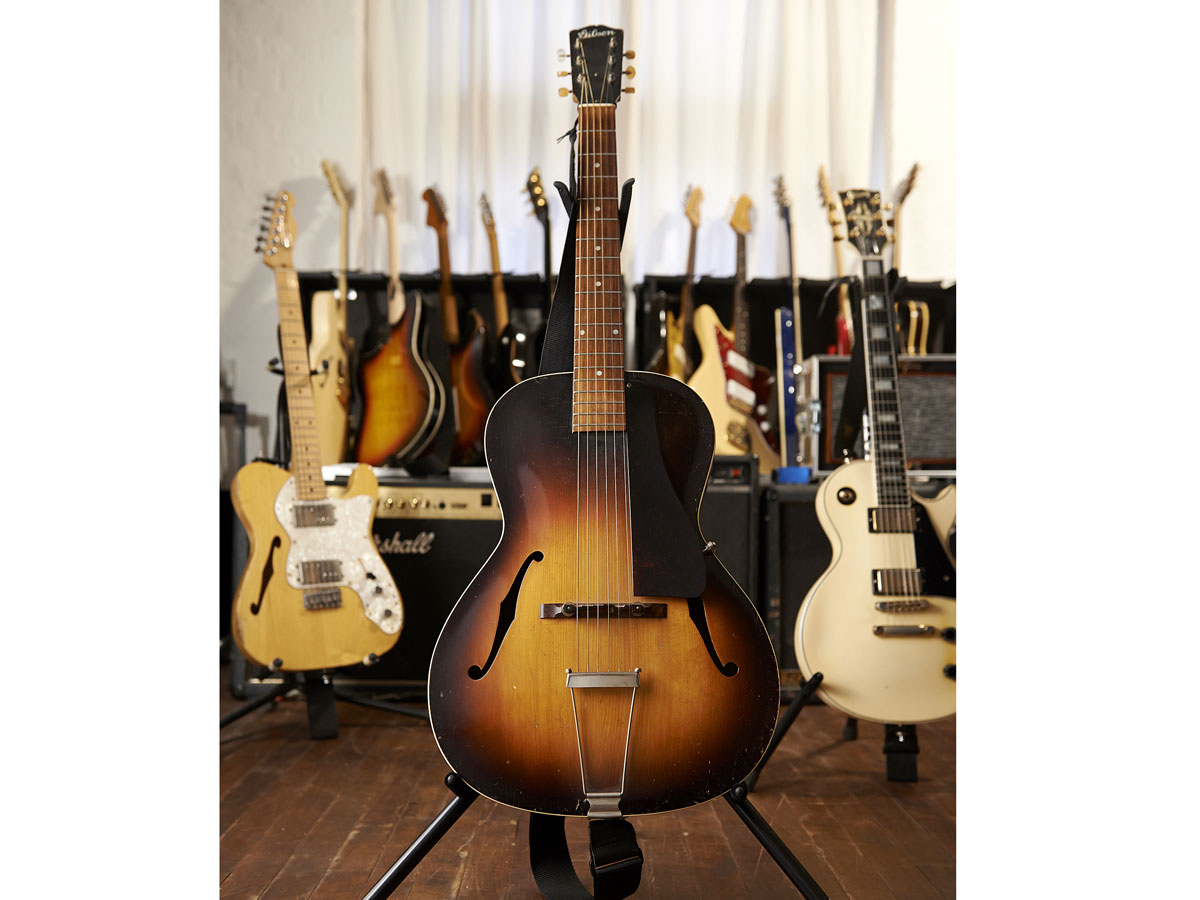
c1940 Gibson L-30
“Bought in a car boot sale by Sean [Moore, Manics drummer] for £400. This is all over the Rewind The Film album. It’s got a beautiful, snub-nosed, woody sound, used especially on Running Out Of Fantasy and Manorbier.”
"Bought in a car boot sale by Sean [Moore, Manics drummer] for £400"
Sean Moore later tells Guitarist he often buys gear on eBay or second-hand for the Manics. “The others are just too lazy to look,” Moore deadpans. For his troubles, Moore has a 1930s Ludwig ‘Black Beauty’ snare drum. That’s drummer’s gold.
Special thanks to Manics tech Rich Beak and vintage guru George Gruhn for their help with this feature.

